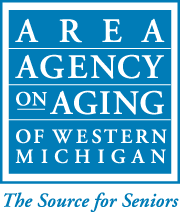Caregiver's Corner: Caring Hearts

By: Ashley Bieber-Moore MS AAAWM Intern
In February hearts are everywhere. Heart-shaped candy boxes, window stickers, cards, and any and everything else you could possibly think of. Valentine’s Day makes us think about love and all of the hearts except for the most important one, the heart inside of our chest. The heart in our chest is the heart that should be top of mind not just in February, but all year long.
According to the Center for Disease Control (CDC) the leading cause of death in the United States is heart disease. As of the 2018 data 1 in every 4 deaths in the country was caused by heart diseases. This means that every 36 seconds someone is dying from this disease and women make up about 46% of these deaths each year. These figures should be especially alarming for the caregiving community as according to the AARP 2020 report women make up 61% of the caregivers in the United States.
For many caregivers doing more for themselves on top of what they already do for others seems impossible. However, if you want to decrease your risk of heart disease or even death, the impossible is necessary. According to the American Heart Association, “80 percent of cardiac and stroke events may be prevented with education and action”. Taking the steps to get educated is the first action you can take to decrease your risk.
Signs and symptoms for women do not always mirror the commonly known symptoms for cardiac distress. For women symptoms can include chest pain, but not always. For women specifically can seem mild and really be what is called a silent heart attack. Symptoms can include pain or pressure in the abdomen or lower chest, pain in the jaw, neck, or upper back, nausea, vomiting, indigestion, difficulty breathing, shortness of breath, fainting, and or extreme fatigue. If you’re a caregiver, you may experience some of these things and assume it is related to a caregiving activity or even just life in general, but it could be a heart attack.
Once you know your risk you can take further action by taking a look at your diet, physical activity, and stress level. This doesn’t mean you can’t have any of the candy in the heart-shaped boxes, but it does mean you need to stop and make time for yourself to “smell the roses.” Self-care is a term you may have heard, and it might even sound like a way of being selfish. But self-care is not selfish. Taking the time you need to better take care of yourself can improve your heart health so you can keep using that heart to care for and be with the ones you love for longer. So while love is top of mind and hearts are all around you don’t forget about the one inside you.
To learn more about your risk of heart disease consult your doctor or visit the CDC at https://www.cdc.gov/heartdisease/risk_factors.htm. For caregiving resources and to learn more about ways to take care of yourself while taking care of others contact your local Area Agency on Aging or visit https://www.aaawm.org/caregivers.
Caregiver’s Corner is provided as a public service of the Caregiver Resource Network. The Caregiver Resource Network is a collaboration of West Michigan organizations dedicated to providing for the needs and welfare of family and professional caregivers within the community. Funded by the Area Agency on Aging of Western Michigan with Older American’s Act Title IIIE, Family Caregiver Support funds.
For more information on Family Caregiver University classes provided by the Caregiver Resource Network, please call (888) 456-5664 or visit www.caregiverresource.net
Tagged:

